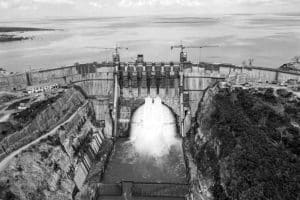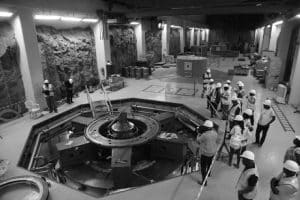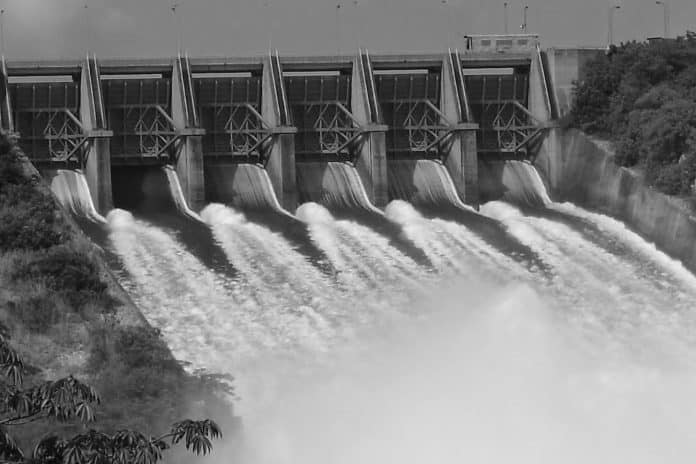Introduction to Kidatu Power Station
Nestled along the banks of the Ruvu River in Tanzania, the Kidatu Power Station stands as a beacon of the country’s commitment to harnessing renewable energy sources. As one of the largest hydroelectric power plants in East Africa, Kidatu plays a pivotal role in powering the nation’s progress towards a sustainable energy future.
In this article, we’ll delve into the importance of renewable energy in Tanzania, explore the technical specifications of Kidatu Power Station, and examine its environmental and community impact. We’ll also uncover the challenges faced by the station and discuss the plans in place to ensure Tanzania’s renewable energy landscape continues to thrive.
Importance of Renewable Energy in Tanzania
Tanzania, a country blessed with an abundance of natural resources, has recognized the vital role that renewable energy plays in its development. With a rapidly growing population and an ever-increasing demand for electricity, the country has made a concerted effort to reduce its reliance on fossil fuels and embrace cleaner, more sustainable energy solutions.
Renewable energy not only helps to mitigate the environmental impact of energy production but also contributes to the country’s economic growth and social well-being. By harnessing the power of renewable sources, such as hydropower, Tanzania can ensure a reliable and affordable energy supply, while also creating new job opportunities and driving technological innovation.
Overview of Tanzania’s Energy Sector

Tanzania’s energy sector is a complex and multifaceted landscape, with a diverse mix of energy sources and distribution networks. The country’s primary energy sources include hydropower, natural gas, biomass, and a small but growing share of solar and wind power.
Hydropower has long been a cornerstone of Tanzania’s energy generation, with several major hydroelectric power plants, including the Kidatu Power Station, contributing significantly to the national grid. However, the country has also been exploring alternative renewable energy sources to diversify its energy mix and enhance its resilience to climate-related challenges.
The Role of Kidatu Power Station in the Renewable Energy Landscape
As one of the largest hydroelectric power plants in East Africa, the Kidatu Power Station plays a crucial role in Tanzania’s renewable energy landscape. Situated on the Ruvu River, the station harnesses the power of flowing water to generate clean, sustainable electricity that is distributed throughout the country.
Kidatu Power Station’s strategic location and impressive technical specifications make it a vital component of Tanzania’s energy infrastructure. The station’s capacity to generate up to 204 megawatts of electricity helps to meet the growing demand for power, while its reliance on a renewable resource ensures a more sustainable and environmentally-friendly energy supply.
Technical Specifications of Kidatu Power Station
Kidatu Power Station is a marvel of engineering, boasting impressive technical specifications that contribute to its efficiency and reliability. The station features:
- Installed Capacity: 204 megawatts (MW)
- Number of Turbines: 4 Francis-type turbines
- Turbine Capacity: 51 MW each
- Annual Energy Generation: Approximately 1,200 gigawatt-hours (GWh)
- Dam Height: 52 meters
- Reservoir Capacity: 1.7 billion cubic meters
These technical details showcase the power and scale of Kidatu Power Station, underscoring its importance in Tanzania’s renewable energy landscape.
Environmental Impact of Kidatu Power Station
As a hydroelectric power plant, Kidatu Power Station has a relatively low environmental impact compared to fossil fuel-based energy sources. The station’s reliance on flowing water to generate electricity means it produces minimal greenhouse gas emissions, contributing to Tanzania’s efforts to reduce its carbon footprint and combat climate change.
Moreover, the station’s design and operation have been carefully engineered to minimize any potential disruptions to the local ecosystem. The station’s reservoir, for instance, is managed to maintain the natural flow of the Ruvu River, ensuring the preservation of aquatic habitats and the well-being of the surrounding communities.
Benefits of Kidatu Power Station to the Local Community

Beyond its role in Tanzania’s renewable energy landscape, Kidatu Power Station has also had a significant positive impact on the local community. The station’s presence has brought employment opportunities, infrastructure development, and social initiatives that have improved the quality of life for the people living in the surrounding areas.
For example, the station has invested in the construction of roads, schools, and healthcare facilities, providing essential services and resources to the local population. Additionally, the station has supported community development programs, such as agricultural training and small business initiatives, helping to diversify the local economy and create sustainable livelihoods.
Challenges Faced by Kidatu Power Station
Despite its impressive achievements, Kidatu Power Station has not been without its challenges. One of the primary concerns has been the variability of water levels in the Ruvu River, which can be affected by seasonal changes and climate-related factors. Fluctuations in water levels can impact the station’s ability to generate electricity consistently, requiring careful management and adaptability.
Another challenge faced by the station is the need for ongoing maintenance and upgrades to ensure its continued efficiency and reliability. As with any large-scale infrastructure project, Kidatu Power Station requires significant investment and resources to keep it operating at peak performance, which can be a logistical and financial hurdle.
Future Plans for Kidatu Power Station and Tanzania’s Renewable Energy Future
As Tanzania continues to chart its course towards a sustainable energy future, the Kidatu Power Station will undoubtedly play a crucial role. The station’s operators and the Tanzanian government have outlined plans to further enhance the station’s capabilities and explore new avenues for renewable energy development.
One of the key initiatives is the ongoing modernization and expansion of the Kidatu Power Station, which will involve upgrading the existing turbines and infrastructure to increase the station’s overall capacity and efficiency. Additionally, the government is exploring the possibility of integrating other renewable energy sources, such as solar and wind power, into the national grid, further diversifying the country’s energy mix.
Conclusion
The Kidatu Power Station stands as a testament to Tanzania’s commitment to harnessing the power of renewable energy. As one of the largest hydroelectric power plants in East Africa, Kidatu plays a pivotal role in powering the country’s progress, contributing to its economic growth, environmental sustainability, and social well-being.
Through its technical prowess, environmental stewardship, and community engagement, Kidatu Power Station exemplifies the transformative potential of renewable energy. As Tanzania continues to chart its course towards a sustainable energy future, the Kidatu Power Station will undoubtedly remain a shining beacon, inspiring other nations to follow suit and embrace the power of renewable energy.
For more articles related to Energy in Tanzania click here!
































